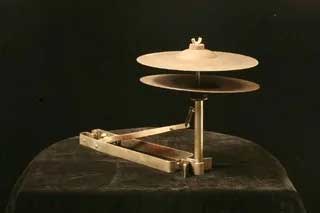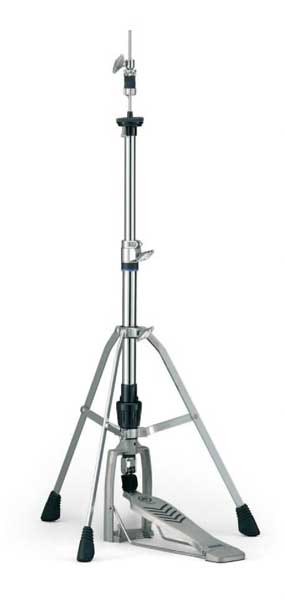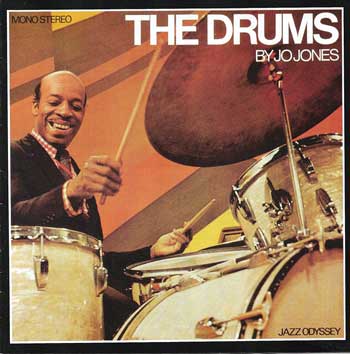The Evolution of the Hi-Hat
Written by Gunnar Egede Kristiansen – 2025
From Foot Cymbals to a Musical Power Tool
The hi-hat is one of the most expressive and important voices in any modern drum kit – but it hasn’t always looked (or sounded) like it does today. In fact, the hi-hat as we know it is the result of over a century of innovation, musical demands, and clever engineering. Here’s how it all started – and how it evolved into one of the drummer’s most essential tools.
Early Beginnings – The "Low Boy"

Before drummers had a full hi-hat stand, they used something called a "low boy" or "low hat." This was essentially a pair of small cymbals mounted just a few inches off the ground, operated entirely by foot using a basic pedal mechanism. These first appeared in the early 1920s, and they allowed drummers to keep time with their foot while using both hands for snare and bass drum accents – a new kind of multitasking in jazz and early swing music.
The low boy worked well rhythmically, but it had a clear limitation: you couldn’t play it with your sticks. And that led to the next major step in the hi-hat’s evolution.
The Invention of the "Hi-Hat"
Sometime in the early 1930s, clever drummers and tinkerers began modifying the low boy to raise it higher – to “hi-hat” level. This allowed drummers to play the top cymbal with their sticks while still using their foot to open and close the cymbals. One of the names most often mentioned in this innovation is “Papa” Jo Jones, the influential drummer from the Count Basie Orchestra. He’s credited not only with pushing the development of the hi-hat mechanically but also with redefining its role musically.
The new, taller hi-hat opened up a world of sonic possibilities – from time-keeping and accents to full-blown soloing. It became a key part of the jazz drummer’s vocabulary almost overnight.

Hi-Hat Hardware – A Technical Timeline
- 1920s: The low boy – operated only with the foot, positioned low to the ground.
- 1930s: Rise of the “hi-hat” – now tall enough to play with sticks.
- 1950s–60s: Stronger springs and more durable materials improve reliability and feel.
- 1970s: Double-braced hardware and improved clutch mechanisms emerge.
- Today: Modern hi-hats include drop clutches for double bass, quick-release systems, and even remote-controlled cable hi-hats for creative setups.
From Jazz to Rock – Expanding the Musical Role
Originally a time-keeping tool in swing and jazz, the hi-hat started taking on a more expressive and aggressive role as music evolved. In funk, R&B, and soul, the hi-hat became a source of subtle ghost notes and intricate syncopation. Drummers like Clyde Stubblefield (James Brown) and Zigaboo Modeliste (The Meters) brought a new kind of feel and groove to the hi-hat – one that shaped generations of music.
In rock, the hi-hat became a powerhouse – think John Bonham or Stewart Copeland – using it not only to drive the rhythm but to shape the entire feel of the groove with tight, choked accents or open sloshy textures. Today, the hi-hat is central in everything from hip-hop and gospel to metal and experimental music.

Hi-Hats Today – Expressive, Technical, and Personal
Today’s hi-hat setup can be as simple or complex as you like. Some players use lightweight 13" hats for crisp articulation, others prefer dark and washy 16" hats for a broader sound. You’ll find auxiliary hats, remote hats, and stacks – plus all kinds of clutches, felts, springs, and mic holders to personalize your setup.
And that’s the beautiful thing: while the hi-hat started as a simple timekeeping tool, it’s grown into one of the most dynamic and personal parts of any drum setup.
Want to learn more about hi-hats and their history?
If you're into the technical evolution, the musical legends, or just want to nerd out a bit more, check out:
- Wikipedia – Hi-hat
A solid overview of the history, construction, and use of the hi-hat across genres.
Looking for Hi-Hat Accessories?
At CymbalONE, we stock a wide selection of hi-hat accessories – from classic clutches and felts to smart solutions like mic holders and quick-release systems. Whether you're upgrading your setup or fine-tuning your feel, we've got what you need.
The hi-hat has come a long way – and it’s still evolving. Make sure yours is doing what it should.
Looking for Hi-Hat Cymbals?
At CymbalONE, you’ll find a carefully selected range of hi-hat cymbals – from crisp and articulate to dark and complex. Whether you’re chasing vintage warmth or modern bite, we’ve got a set that fits your sound.
